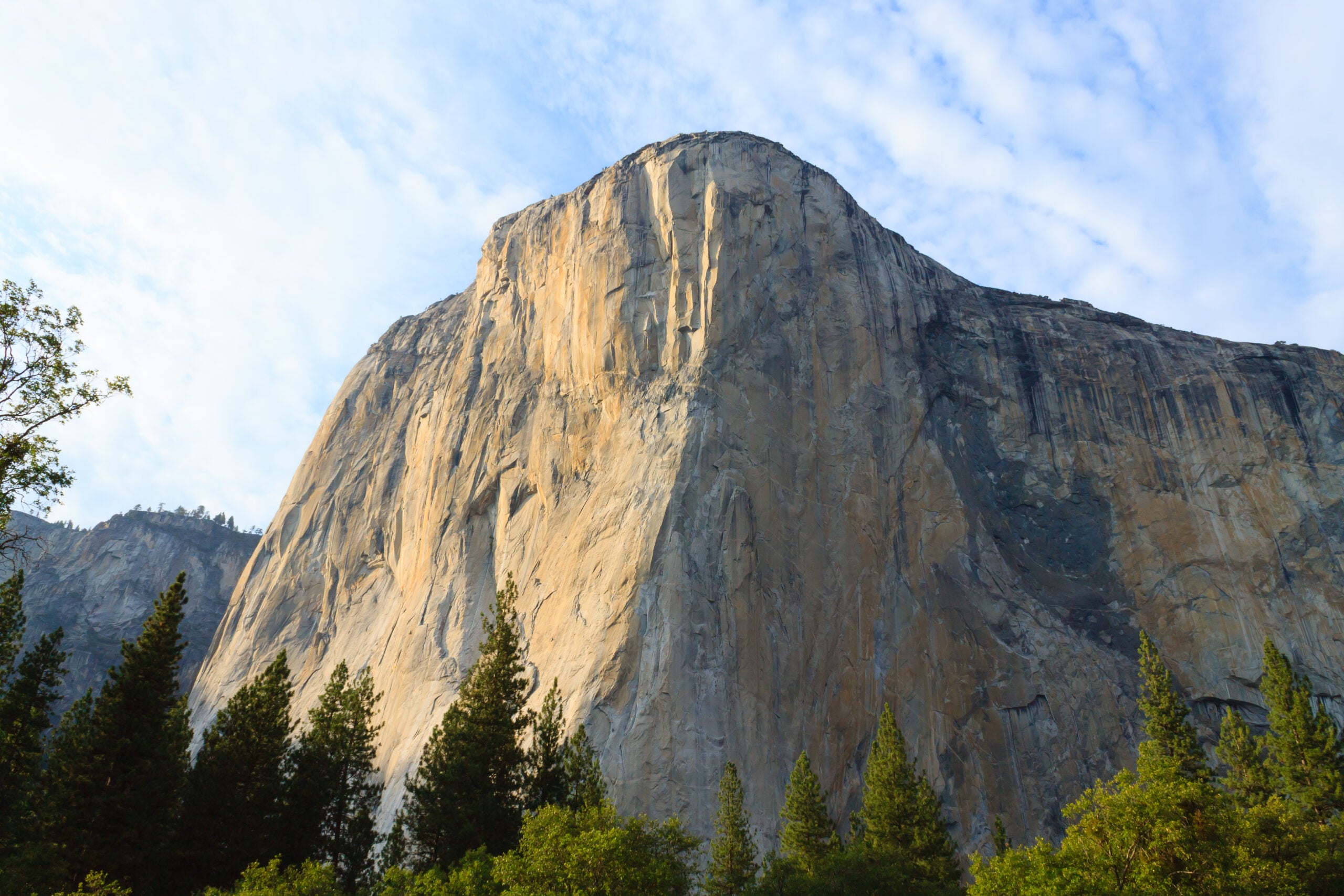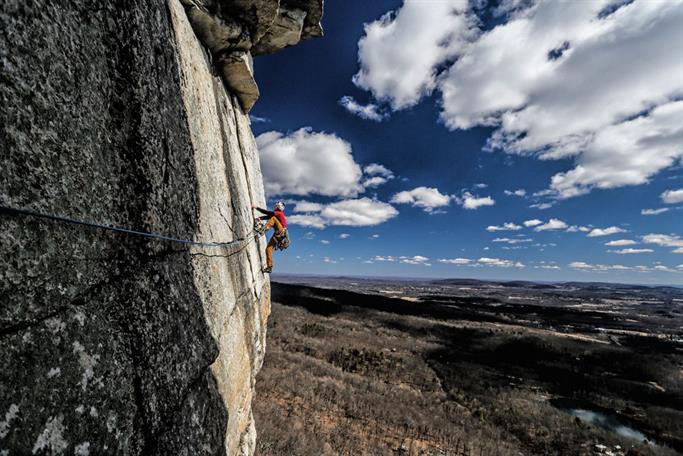Why Go Up When You Could Go Sideways? Here Are 4 Massive Girdle Traverses

Photo Taken In United States, Aspen Valley (Photo: Davide G/EyeEm)
The Girdle Traverse—easily one of the more esoteric, pointless pursuits in climbing—is quite simple: You climb all way across a cliff instead of from the bottom to the top. As Greg Child said (according to Chris McNamara, at least): “The only thing more abstract than climbing up a wall is to traverse it from one side to the other.”
Child pretty much hits the nail on the head. While the strictures and guiding principles that most of us follow when we go climbing are fairly arbitrary, they do all follow a basic, overarching sort of logic: start at the bottom and go up. Deciding to just go across instead? Well, It’s kind of like Tommy Caldwell’s Loop Pitch on the Dawn Wall—yeah, technically it’s kosher and all, but that’s not really how it’s supposed to work. Just sayin’.

Paul Ross is the spiritual godfather of the form in the U.S. After completing the first girdle traverse of Whitehorse Ledge in New Hampshire in 1972, he turned to Cannon Cliff, the best chosspile the state had to offer. He enlisted the help of “Hot” Henry Barber, and the duo made the first climber’s-right-to-climber’s-left diagonaling traverse of Cannon in only six hours, topping out on the uber-classic Whitney-Gilman Ridge. They named their creation Magical Mystery Tour after the Beatles’ album of the same name. MMT comes in at a eminently pedestrian 5.9 despite the massive amount of terrain it covers.
Girdle traverses like that on Cannon require a rare kind of inspiration. In addition to Magical Mystery Tour, there are a special few that are so ridiculous in size or scope that we think they deserve some special recognition. With that said, we present to you a selection of the finest, proudest, most bizarre, most useless and undoubtedly ridiculous girdle traverses heretofore completed.
The Great Wall of China (5.9 R), the Gunks, New York (1987)
9,000 feet, 67 pitches
One of the most logical reasons for a a girdle traverse might be the desire for long, continuous climbing in a place with a lack of appropriate cliffs. Much of the country fits this description. Take the Gunks in New York. None of the routes go much higher than a couple hundred feet above the ground. But standing on the Carriage Road in the Trapps, if you look to your left or your right, the cliff band stretches out of sight.
In May 1987, Dave Rosenstein and notorious bolt-chopper Ken Nichols decided to start at one end of the Trapps and keep climbing until they reached the other. What resulted was the Great Wall of China, a 9,000-foot, 67-pitch girdle traverse.
For more than a decade, the Great Wall was likely the longest rock climb on the planet.
Nichols and Rosenstein were never more than a pitch-length above the ground.

Stanage Traverse (E5 6b /5.11d-ish), U.K. (1992)
5000-ish meters
The Brits are never ones to be outdone. If us Yanks could climb thousands of feet on a cliff only a few hundred feet high, surely they could do so on their even smaller, decidedly less regal rocks, right?
Enter Ron Fawcett. In 1992, he traversed Stanage—an escarpment in the Peak District that runs (to varying degrees of unbroken-ness) for kilometers and is just 25 meters (or about 82 feet) tall at its highest point. According to an article at climbing.de, Fawcett “solo traversed each buttress without touching the ground or top” of each crag. He finished in just 6 hours 10 minutes.
Fawcett’s feat takes the concept of the girdle traverse to perhaps its most illogical conclusion: Stanage isn’t even one contiguous piece of rock. He ran between separate cliffs. Impressive? No question. Cool? Um, sure. Contrived? Oh yea.
In July 2007, pre-Wide-Boyz-fame Pete Whittaker and Ben Cossey climbed side by side, solo, to make the second and third traverses of Stanage.

El Capitan Girdle Traverse (5.10 A4-), Yosemite, California (1998)
14,000 feet, 75 pitches
First ascentionist Chris McNamara’s final verdict on his El Capitan Girdle Traverse? “The Girdle is not El Cap’s best route but it climbs many of El Caps finest pitches. It is also not the worst route, although there are a few stinker sections. In the end the Girdle was just what we expected it to be: long, obscure and most of all adventurous.”
Completed in April 1998 by McNamara and Mark Melvin, the El Capitan Girdle Traverse has never seen a second ascent to our knowledge. The traverse required all the tricks in the book, from “climbing, rappelling, and walking” to a “200-foot section of ‘5.8 bushes.’”
As with many visionary first ascents, McNamara and and Melvin’s style leaves plenty of room for improvement. Not returning to the ground (which would require an obscene amount of hauling and lower outs—maybe an impossible amount?) would be one way to raise the bar. And dare we suggest freeing the beast? Perhaps that would be best left to that next unhinged generation more interested in moving sideways than up-ways.

Farley Ledge, Massachusetts
? feet, ? pitches
Farley Ledge is series of bluffs above Erving, Massachusetts. Despite no guidebook and on-off access issues, it has excellent lines. The prominence of the cliffs do leave something to be desired though—save for small exceptions, the outcroppings are never more than about a pitch high.
A local, Pete Clark, eager for multipitch climbing in a big-wall desert, devised the Farley girdle traverse.
He received a Live Your Dream Grant from the American Alpine Club in 2013 to support his quixotic goal. In his application, Clark wrote, “This project is a lot like ‘a Northeast climber’s first trip to Yosemite to climb a big wall,’ except it’s not in Yosemite. And it goes sideways.”
In issue 15 of Climberism magazine, Tim Keenan wrote of Clark: “What he is best at is sarcastic sartorial realism. With his planned journey of girdle traversing the entirety of Farley (King Snake, The Eternal Mystery, proposed traverse route name), he not only will be climbing at his absolute limit, but also pushing the boundary of pure, unadulterated cosmic absurdity.”
Did Clark succeed? Honestly, we’re not sure. There is scant info online. But we sure hope he did.